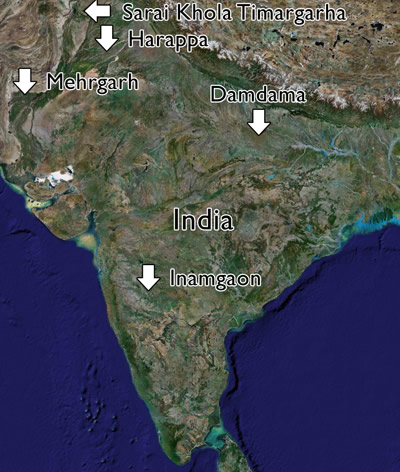 |
|
|
|
Research Interests Research interests:
Current research projects & publications: A bioarchaeological analysis of human remains from Damdama, a ‘Mesolithic’ site in the Gangetic Plain of north India. Goal: to advance knowledge of health, nutrition and activity patterns during the transition to agriculture in South Asia.
Documenting sex differences in pathological dental lesions (especially caries and enamel hypoplasias) in prehistoric and living groups. Goal: to better understanding the multi-causal etiology of sex differences in oral health: diet, food preparation, reproductive physiology, fertility, and hormonal influences.
Enamel defects in the deciduous teeth of prehistoric and living humans, fossil and extant apes, especially labial canine hypoplasias. Focal study samples include:
Measuring changes in health status and nutrition across subsistence transitions: diachronic and synchronic. Diachronic: From reliance on farming to increased foraging - in western India. Goal: to evaluate the relative impact and nature of interaction among key variables such as climate change, subsistence shift, demographics and human biology.
Synchronic: Impact of trade and exchange across cultural boundaries on oral health.
Traumatic dental injuries and occupational usage of teeth as tools:
Mehrgarh (Lukacs, 1988); Harappa (Hemphill & Lukacs 1993) Sarai Khola (Lukacs, 1983) Exploring the relationship between two indicators of physiological stress: enamel hypoplasia and odontometric asymmetry, using a comparative multi-species research design that includes juvenile modern humans and great apes. Goal: to determine if localized hypoplasia of primary canine teeth is an indicator of systemic developmental stress or results from localized, non-systemic factors. Then to use these results in the interpretation of enamel defects in Australopithecus afarensis.
|

